The Grid scale stationary battery storage market is expected to grow from USD 10.44 billion in 2020 to USD 34.22 billion by 2028, at a CAGR of 16% during the forecast period 2021-2028.
The market for stationary battery storage systems is constantly expanding globally. Grid-connected stationary battery storage has grown from a specialized product to a mass market in less than a decade, with worldwide energy and automobile firms fighting for market dominance. Stationary battery storage is critical for ensuring a consistent and reliable power source. The device has a wide range of applications in a variety of sectors, and it offers outstanding storage capacity and connection. They come in a variety of styles and are utilized in emergency situations. High-capacity batteries are used as a backup option to keep the electrical grid stable and offer an uninterrupted supply of electricity during power outages or breakdowns.
Costs are falling down while performance is improving in lithium-ion batteries due to growing EV markets and manufacturing economies of scale will drive the market growth. The growth of battery storage solutions is also boosted by widespread support for renewable energy and emissions reduction. This is certainly relevant in both the public and private sectors. Despite the origin of generation, battery storage may help balance the grid and improve power quality. Almost every country is reforming its marketplace to enable batteries to offer capacity and related services. Many are expanding the number of financial incentives available for storage investment. This reflects policymakers' increased knowledge of the wide variety of benefits that battery storage may provide across the power value chain. In certain countries, the elimination of Feed in Tariffs or Net Metered Payments is driving behind-the-meter battery installations as customers seek to maximize the value of their on-ground solar systems in the absence of these incentives. Many nations are looking for renewable energy storage to minimize their reliance on imported energy, increase system stability and resilience, and achieve decarbonization and environmental goals. All these factors are driving the market growth. However, market growth may be hampered by perceptions of expensive pricing and a lack of consistency.
This study delivers a comprehensive analysis of type, services, and region. The type segment includes sodium sulphur, lithium ion, flow battery, lead acid. The sodium sulphur segment held the largest market share, owing to its excellent energy, power density, and affordable cost of the product. The services segment includes frequency regulation, black start services, capacity firming, energy shifting and capacity deferral, flexible ramping, reduced RE curtailment, reduced reliance on diesel gensets, transmission and distribution congestion relief. The frequency regulation segment held the largest market share, as renewable energy sources are becoming more prominent for generating electricity.
The market has been divided into North America, Europe, Asia-Pacific, Middle East & Africa, and South America. The Asia Pacific dominated the market and held the largest market share in 2020. Due to the growing demand for electrification in rural regions and increased investments in the region's power generating capacity, the grid scale stationary battery storage market in Asia-Pacific will see remarkable growth. In addition, as major economies such as China, India, and ASEAN nations become more industrialized, the demand for dependable energy and grid stability will grow. Due to this, energy storage devices are being used to regulate frequency and perform other auxiliary functions. Constant efforts to cut carbon emissions, along with a developing renewable energy system, will help the regional economy expand even faster. Nippon Telegraph & Telephone stated a proposal to boost renewable energy capacity from 300 MW to 7.5 GW by 2030 in Japan in 2020.
Some of the notable players in the market are A123 Systems LLC, Durapower, GS Yuasa Corporation, Hoppecke Batteries Inc., Johnson controls Inc., Koninklijke Philips N.V., LG Chem, Panasonic Corporation, Samsung SDI, Tesla, Toshiba Corporation, Uniper, amongst other players.
Grid scale stationary battery storage market Analysis and Forecast, Type
Grid scale stationary battery storage market Analysis and Forecast, Services
Grid scale stationary battery storage market Analysis and Forecast, Region
Report Description:
1. Introduction
1.1. Objectives of the Study
1.2. Market Definition
1.3. Research Scope
1.4. Currency
1.5. Key Target Audience
2. Research Methodology and Assumptions
3. Executive Summary
4. Premium Insights
4.1. Porter’s Five Forces Analysis
4.2. Value Chain Analysis
4.3. Top Investment Pockets
4.3.1. Market Attractiveness Analysis By Type
4.3.2. Market Attractiveness Analysis By Services
4.3.3. Market Attractiveness Analysis By Region
4.4. Industry Trends
5. Market Dynamics
5.1. Market Evaluation
5.2. Drivers
5.2.1. Favourable regulatory framework
5.2.2. Rise in the renewable energy sector
5.2.3. Longer life span & high energy density
5.3. Restraints
5.3.1. Concerns about safety
6. Global Grid Scale Stationary Battery Storage Market Analysis and Forecast, By Type
6.1. Segment Overview
6.2. Sodium Sulphur
6.3. Lithium Ion
6.4. Flow Battery
6.5. Lead Acid
7. Global Grid Scale Stationary Battery Storage Market Analysis and Forecast, By Services
7.1. Segment Overview
7.2. Frequency Regulation
7.3. Black Start Services
7.4. Capacity Firming
7.5. Energy Shifting and Capacity Deferral
7.6. Flexible Ramping
7.7. Reduced RE Curtailment
7.8. Reduced Reliance on Diesel Gensets
7.9. Transmission and Distribution Congestion Relief
8. Global Grid Scale Stationary Battery Storage Market Analysis and Forecast, By Regional Analysis
8.1. Segment Overview
8.2. North America
8.2.1. U.S.
8.2.2. Canada
8.2.3. Mexico
8.3. Europe
8.3.1. Germany
8.3.2. France
8.3.3. U.K.
8.3.4. Italy
8.3.5. Spain
8.4. Asia-Pacific
8.4.1. Japan
8.4.2. China
8.4.3. India
8.5. South America
8.5.1. Brazil
8.6. Middle East and Africa
8.6.1. UAE
8.6.2. South Africa
9. Global Grid Scale Stationary Battery Storage Market-Competitive Landscape
9.1. Overview
9.2. Market Share of Key Players in Global Grid Scale Stationary Battery Storage Market
9.2.1. Global Company Market Share
9.2.2. North America Company Market Share
9.2.3. Europe Company Market Share
9.2.4. APAC Company Market Share
9.3. Competitive Situations and Trends
9.3.1. Product Launches and Developments
9.3.2. Partnerships, Collaborations, and Agreements
9.3.3. Mergers & Acquisitions
9.3.4. Expansions
10. Company Profiles
10.1. A123 Systems LLC
10.1.1. Business Overview
10.1.2. Company Snapshot
10.1.3. Company Market Share Analysis
10.1.4. Company Product Portfolio
10.1.5. Recent Developments
10.1.6. SWOT Analysis
10.2. Durapower
10.2.1. Business Overview
10.2.2. Company Snapshot
10.2.3. Company Market Share Analysis
10.2.4. Company Product Portfolio
10.2.5. Recent Developments
10.2.6. SWOT Analysis
10.3. GS Yuasa Corporation
10.3.1. Business Overview
10.3.2. Company Snapshot
10.3.3. Company Market Share Analysis
10.3.4. Company Product Portfolio
10.3.5. Recent Developments
10.3.6. SWOT Analysis
10.4. Hoppecke Batteries Inc.
10.4.1. Business Overview
10.4.2. Company Snapshot
10.4.3. Company Market Share Analysis
10.4.4. Company Product Portfolio
10.4.5. Recent Developments
10.4.6. SWOT Analysis
10.5. Johnson controls Inc.
10.5.1. Business Overview
10.5.2. Company Snapshot
10.5.3. Company Market Share Analysis
10.5.4. Company Product Portfolio
10.5.5. Recent Developments
10.5.6. SWOT Analysis
10.6. Koninklijke Philips N.V.
10.6.1. Business Overview
10.6.2. Company Snapshot
10.6.3. Company Market Share Analysis
10.6.4. Company Product Portfolio
10.6.5. Recent Developments
10.6.6. SWOT Analysis
10.7. LG Chem
10.7.1. Business Overview
10.7.2. Company Snapshot
10.7.3. Company Market Share Analysis
10.7.4. Company Product Portfolio
10.7.5. Recent Developments
10.7.6. SWOT Analysis
10.8. Panasonic Corporation
10.8.1. Business Overview
10.8.2. Company Snapshot
10.8.3. Company Market Share Analysis
10.8.4. Company Product Portfolio
10.8.5. Recent Developments
10.8.6. SWOT Analysis
10.9. Samsung SDI
10.9.1. Business Overview
10.9.2. Company Snapshot
10.9.3. Company Market Share Analysis
10.9.4. Company Product Portfolio
10.9.5. Recent Developments
10.9.6. SWOT Analysis
10.10. Tesla
10.10.1. Business Overview
10.10.2. Company Snapshot
10.10.3. Company Market Share Analysis
10.10.4. Company Product Portfolio
10.10.5. Recent Developments
10.10.6. SWOT Analysis
10.11. Toshiba Corporation
10.11.1. Business Overview
10.11.2. Company Snapshot
10.11.3. Company Market Share Analysis
10.11.4. Company Product Portfolio
10.11.5. Recent Developments
10.11.6. SWOT Analysis
10.12. Uniper
10.12.1. Business Overview
10.12.2. Company Snapshot
10.12.3. Company Market Share Analysis
10.12.4. Company Product Portfolio
10.12.5. Recent Developments
10.12.6. SWOT Analysis
List of Table
1. Global Grid Scale Stationary Battery Storage Market, By Type, 2018-2028 (USD Billion)
2. Global Sodium Sulphur, Grid Scale Stationary Battery Storage Market, By Region, 2018-2028 (USD Billion)
3. Global Lithium Ion, Grid Scale Stationary Battery Storage Market, By Region, 2018-2028 (USD Billion)
4. Global Flow Battery, Grid Scale Stationary Battery Storage Market, By Region, 2018-2028 (USD Billion)
5. Global Lead Acid, Grid Scale Stationary Battery Storage Market, By Region, 2018-2028 (USD Billion)
6. Global Grid Scale Stationary Battery Storage Market, By Services, 2018-2028 (USD Billion)
7. Global Frequency Regulation, Grid Scale Stationary Battery Storage Market, By Region, 2018-2028 (USD Billion)
8. Global Black Start Services, Grid Scale Stationary Battery Storage Market, By Region, 2018-2028 (USD Billion)
9. Global Capacity Firming, Grid Scale Stationary Battery Storage Market, By Region, 2018-2028 (USD Billion)
10. Global Energy Shifting and Capacity Deferral, Grid Scale Stationary Battery Storage Market, By Region, 2018-2028 (USD Billion)
11. Global Flexible Ramping, Grid Scale Stationary Battery Storage Market, By Region, 2018-2028 (USD Billion)
12. Global Reduced RE Curtailment, Grid Scale Stationary Battery Storage Market, By Region, 2018-2028 (USD Billion)
13. Global Reduced Reliance on Diesel Gensets, Grid Scale Stationary Battery Storage Market, By Region, 2018-2028 (USD Billion)
14. Global Transmission and Distribution Congestion Relief, Grid Scale Stationary Battery Storage Market, By Region, 2018-2028 (USD Billion)
15. North America Grid Scale Stationary Battery Storage Market, By Type, 2018-2028 (USD Billion)
16. North America Grid Scale Stationary Battery Storage Market, By Services, 2018-2028 (USD Billion)
17. U.S. Grid Scale Stationary Battery Storage Market, By Type, 2018-2028 (USD Billion)
18. U.S. Grid Scale Stationary Battery Storage Market, By Services, 2018-2028 (USD Billion)
19. Canada Grid Scale Stationary Battery Storage Market, By Type, 2018-2028 (USD Billion)
20. Canada Grid Scale Stationary Battery Storage Market, By Services, 2018-2028 (USD Billion)
21. Mexico Grid Scale Stationary Battery Storage Market, By Type, 2018-2028 (USD Billion)
22. Mexico Grid Scale Stationary Battery Storage Market, By Services, 2018-2028 (USD Billion)
23. Europe Grid Scale Stationary Battery Storage Market, By Type, 2018-2028 (USD Billion)
24. Europe Grid Scale Stationary Battery Storage Market, By Services, 2018-2028 (USD Billion)
25. Germany Grid Scale Stationary Battery Storage Market, By Type, 2018-2028 (USD Billion)
26. Germany Grid Scale Stationary Battery Storage Market, By Services, 2018-2028 (USD Billion)
27. France Grid Scale Stationary Battery Storage Market, By Type, 2018-2028 (USD Billion)
28. France Grid Scale Stationary Battery Storage Market, By Services, 2018-2028 (USD Billion)
29. U.K. Grid Scale Stationary Battery Storage Market, By Type, 2018-2028 (USD Billion)
30. U.K. Grid Scale Stationary Battery Storage Market, By Services, 2018-2028 (USD Billion)
31. Italy Grid Scale Stationary Battery Storage Market, By Type, 2018-2028 (USD Billion)
32. Italy Grid Scale Stationary Battery Storage Market, By Services, 2018-2028 (USD Billion)
33. Spain Grid Scale Stationary Battery Storage Market, By Type, 2018-2028 (USD Billion)
34. Spain Grid Scale Stationary Battery Storage Market, By Services, 2018-2028 (USD Billion)
35. Asia Pacific Grid Scale Stationary Battery Storage Market, By Type, 2018-2028 (USD Billion)
36. Asia Pacific Grid Scale Stationary Battery Storage Market, By Services, 2018-2028 (USD Billion)
37. Japan Grid Scale Stationary Battery Storage Market, By Type, 2018-2028 (USD Billion)
38. Japan Grid Scale Stationary Battery Storage Market, By Services, 2018-2028 (USD Billion)
39. China Grid Scale Stationary Battery Storage Market, By Type, 2018-2028 (USD Billion)
40. China Grid Scale Stationary Battery Storage Market, By Services, 2018-2028 (USD Billion)
41. India Grid Scale Stationary Battery Storage Market, By Type, 2018-2028 (USD Billion)
42. India Grid Scale Stationary Battery Storage Market, By Services, 2018-2028 (USD Billion)
43. South America Grid Scale Stationary Battery Storage Market, By Type, 2018-2028 (USD Billion)
44. South America Grid Scale Stationary Battery Storage Market, By Services, 2018-2028 (USD Billion)
45. Brazil Grid Scale Stationary Battery Storage Market, By Type, 2018-2028 (USD Billion)
46. Brazil Grid Scale Stationary Battery Storage Market, By Services, 2018-2028 (USD Billion)
47. Middle East and Africa Grid Scale Stationary Battery Storage Market, By Type, 2018-2028 (USD Billion)
48. Middle East and Africa Grid Scale Stationary Battery Storage Market, By Services, 2018-2028 (USD Billion)
49. UAE Grid Scale Stationary Battery Storage Market, By Type, 2018-2028 (USD Billion)
50. UAE Grid Scale Stationary Battery Storage Market, By Services, 2018-2028 (USD Billion)
51. South Africa Grid Scale Stationary Battery Storage Market, By Type, 2018-2028 (USD Billion)
52. South Africa Grid Scale Stationary Battery Storage Market, By Services, 2018-2028 (USD Billion)
List of Figures
1. Global Grid Scale Stationary Battery Storage Market Segmentation
2. Global Grid Scale Stationary Battery Storage Market: Research Methodology
3. Market Size Estimation Methodology: Bottom-Up Approach
4. Market Size Estimation Methodology: Top-Down Approach
5. Data Triangulation
6. Porter’s Five Forces Analysis
7. Value Chain Analysis
8. Global Grid Scale Stationary Battery Storage Market Attractiveness Analysis By Type
9. Global Grid Scale Stationary Battery Storage Market Attractiveness Analysis By Services
10. Global Grid Scale Stationary Battery Storage Market Attractiveness Analysis By Region
11. Global Grid Scale Stationary Battery Storage Market: Dynamics
12. Global Grid Scale Stationary Battery Storage Market Share by Type (2021 & 2028)
13. Global Grid Scale Stationary Battery Storage Market Share by Services (2021 & 2028)
14. Global Grid Scale Stationary Battery Storage Market Share by Regions (2021 & 2028)
15. Global Grid Scale Stationary Battery Storage Market Share by Company (2020)
Market research is a method of gathering, assessing and deducing data & information about a particular market. Market research is very crucial in these days. The techniques analyze about how a product/service can be offered to the market to its end-customers, observe the impact of that product/service based on the past customer experiences, and cater their needs and demands. Owing to the successful business ventures, accurate, relevant and thorough information is the base for all the organizations because market research report/study offers specific market related data & information about the industry growth prospects, perspective of the existing customers, and the overall market scenario prevailed in past, ongoing present and developing future. It allows the stakeholders and investors to determine the probability of a business before committing substantial resources to the venture. Market research helps in solving the marketing issues challenges that a business will most likely face.
Market research is valuable because of the following reasons:
Our research report features both the aspects; qualitative and quantitative. Qualitative part provides insights about the market driving forces, potential opportunities, customer’s demands and requirement which in turn help the companies to come up with new strategies in order to survive in the long run competition. The quantitative segment offers the most credible information related to the industry. Based on the data gathering, we use to derive the market size and estimate their future growth prospects on the basis of global, region and country.
Our market research process involves with the four specific stages.

Data Collection: This stage of the market research process involves with the gathering and collecting of the market/industry related data from the sources. There are basically two types of research methods:
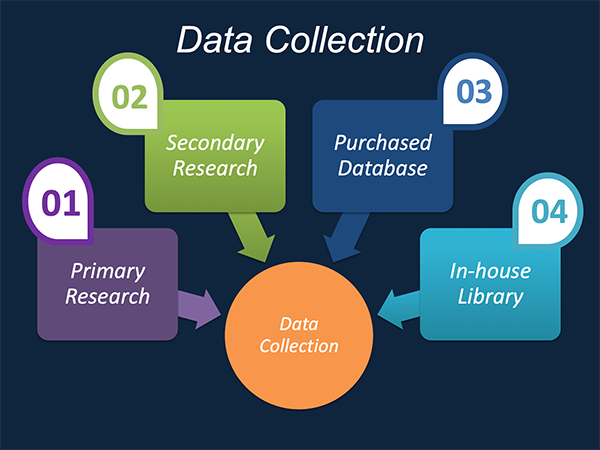
Data Synthesis: This stage includes the evaluation and assessment of all the data acquired from the primary and secondary research. It likewise includes in evaluating the information for any disparity watched while information gathering identified with the market. The data & information is gathered with consideration to the heterogeneity of sources. Scientific and statistical methods are implemented for synthesizing dissimilar information sets and provide the relevant data which is fundamental for formulating strategies. Our organization has broad involvement with information amalgamation where the information goes through different stages:


Market Formulation & Deduction: The last stage includes assigning the data & information in a suitable way in order to derive market size. Analyst reviews and domain based opinions based on holistic approach of market estimation combined with industry investigation additionally features a crucial role in this stage.
This stage includes with the finalization of the market size and numbers that we have gathered from primary and secondary research. With the data & information addition, we ensure that there is no gap in the market information. Market trend analysis is finished by our analysts by utilizing data extrapolation procedures, which give the most ideal figures to the market.
Data Validation: Validation is the most crucial step in the process. Validation & re-validation through scientifically designed technique and process that helps us finalize data-points to be used for final calculations. This stage also involves with the data triangulation process. Data triangulation generally implicates the cross validation and matching the data which has been collected from primary and secondary research methods.





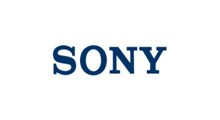

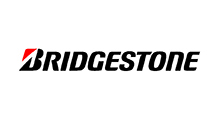

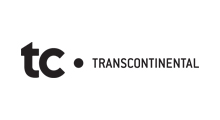















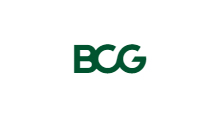




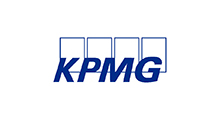




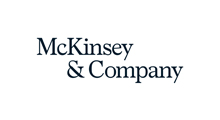

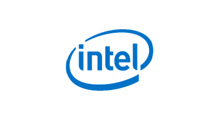







Free Customization
Countries can be added on demand
Free yearly update on purchase of Multi/Corporate User License
Companies served till date

We serve our customers 24x7 for 365 days through calls, emails and live chat options.

Huge database of exceptional market reports bringing market intelligence to your fingertips.

SSL enabled, we offer you various secured payment options for risk free purchase.